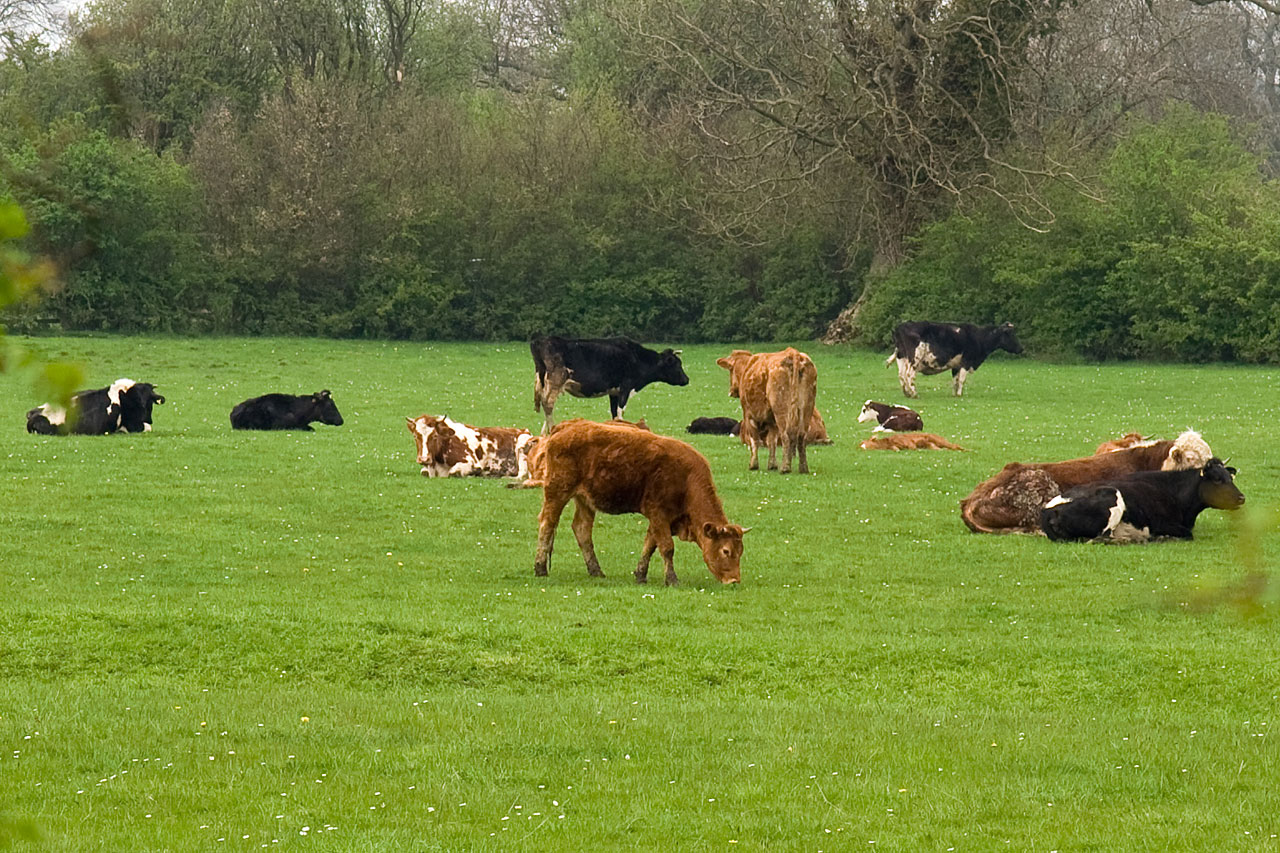
Wednesday, March 28, 2018 - Springtime brings the growth of new spring grasses, but also the potential for grass tetany. Grass tetany is a disord er in cattle when the level of magnesium in the blood and in the cerebrospinal fluid (which surrounds the brain and spinal cord) decreases below a critical level. In the development of grass tetany, the level of magnesium in the blood decreases before the level in the cerebrospinal fluid.
er in cattle when the level of magnesium in the blood and in the cerebrospinal fluid (which surrounds the brain and spinal cord) decreases below a critical level. In the development of grass tetany, the level of magnesium in the blood decreases before the level in the cerebrospinal fluid.
Some contributing factors to this complex condition are:
- Low levels of blood magnesium (hypomagnesemia) are usually associated with low levels of blood calcium in late pregnant cows and cows with calves at their side.
- Older cows with young calves are most vulnerable.
- Those grazing on grass-dominant pastures are more susceptible.
- Pastures with acid soils, high-potassium soils, and/or soils treated with potassium fertilizers contribute to the problem.
- Environmental effects such as: wind, rain and/or sudden temperature drop.
- Heavy nitrogen or potassium fertilizer application reduces the amount of magnesium available to the plant from the soil and so reduces plant magnesium levels.
- Cows can store only very small amounts of magnesium in their bones and soft tissues. They lose magnesium in milk, urine and digestive secretions, and unless replaced, grass tetany will result.
- In the soil, plants, and animals, other minerals such as sodium, potassium, chlorine and manganese can interfere with the amount of magnesium a cow will be able to obtain from its feed.
For most farmers, the first sign of an outbreak of grass tetany is finding dead cows. Usually, there is froth from the mouth and nose, and obvious struggle where the animal’s legs moved violently before she died. Excitement and muscular spasms (tetany) are the most common symptoms.
Initial, often missed, signs of the disorder include twitching of the face and ears, a wary appearance, and a stiff gait. In the intermediate form of the disorder, the cow is wild, her front legs ‘goosestep’, and the tail is held a little bit high and she may appear blind. Excitement, galloping, bellowing and staggering are common in the worst form of the disorder. The cow soon goes down on her side, with her legs outstretched and ‘paddling.’ Her head arches back slightly and she froths at the mouth. If the animal is down, any disturbance (especially if she is touched) may start leg paddling. The animal may die within minutes of being seen staggering, especially if she is driven or stressed in any way.
COMMENT: Why take a chance? Check out the many fine programs from Advanced Biological Concepts, to prevent mineral imbalances in all classes of livestock.
Learn more at this link